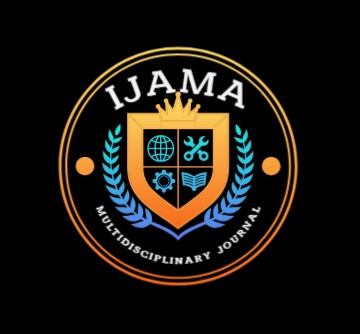International Journal of Advanced Multidisciplinary Application (IJAMA)

Author Benefits
Title :Geo-spatial analysis on Socioeconomic mapping between Demographic data and Economic growth: A case study of Mumbai
Author : Ar. Anagha P Chikkalkar1, Ar. Jyothi Gupta2
Affiliation : 1,2School of Architecture/Christ University, Bengaluru/ India
Volume/Issue : Volume 2 Issue 4 -2025/April
DOI: 10.5281/zenodo.16732290
OpenAIRE : https://explore.openaire.eu/search/publication?pid=10.5281%2Fzenodo.16735996
Author Indexing :
Abstract: Abstract: Background: The Industrial Revolution and globalization spurred global economic growth, creating
financial hubs like New York and London. India’s post-independence focus on industrialization and 1991
liberalization fueled rapid growth in IT, manufacturing, and finance, with Mumbai emerging as a trade and
investment hub. Maharashtra’s robust industrial base and Mumbai’s strategic coastal location, migration, and
key institutions like the RBI and BSE cemented its status as India’s financial capital.
Aim: [3][4]To understand and evaluate GIS Mapping of Mumbai concerning economic growth and
sustainability.
Objectives: To identify the financial zones in Mumbai using GIS Mapping, to analyze the literature and case
studies in Mumbai using GIS, and to develop Maps for demographic data and economic growth of Mumbai.
Research question: RQ 1) What are the demographic characteristics of Mumbai? RQ 2) Why is Mumbai
considered the financial capital of India in terms of economic growth?
Methods and results: With the use of ArcGIS Pro and census data (2011) in shape files and table data, we
developed a suite of symbology maps to visually represent and analyze data patterns and growth trends.
Conclusion: Through ten literature reviews, the identified research gaps in Mumbai provided valuable insights
into the city’s financial growth. I utilized GIS tools to create maps that integrate demographic, GDP, and
population data. These GIS maps reveal patterns that impact the planning and implementation of economic
strategies in Mumbai. This research provides essential insights into spatial planning and financial
management within the city, emphasizing how Mumbai’s economic growth plays a crucial role in India’s
overall economic progress, effectively illustrated through the GIS visuals.
Limitations: This study focuses on demographic and economic spatial data due to limitations in data
availability and time constraints. Future research on Mumbai could expand to include sustainable indicators
such as environmental factors, technological advancements, and governance practices.
Keywords: GIS, geospatial data, mapping, spatial patterns, sustainability, socio-economy, demography,
Mumbai, growth
References
[1] Khatri, S., Kokane, P., Kumar, V., & Pawar, S. (2022). Prediction of waterlogged zones under heavy rainfall conditions using machine learning and GIS tools: A case study of Mumbai. GeoJournal, 87(4), 1–15.
https://doi.org/10.1007/s10708-022-10731-3
[2] Vinayak, B., Lee, H. S., & Gedem, S. (2021). Prediction of land use and land cover changes in Mumbai City, India,using remote sensing data and a multilayer percep-tron neural network-based Markov chain model. Sustainability,
13(2), 471. https://doi.org/10.3390/su13020471
[3] Raskar-Phule, R., & Choudhury, D. (2015). Vulnerability mapping for disaster as-sessment using ArcGIS tools and techniques for Mumbai City, India. International Journal of Earth Sciences and Engineering, 8(4), 1695–1700.
[4] Kumar, A., Gupta, I., Brandt, J., Kumar, R., Dikshit, A. K., & Patil, R. S. (2016). Air quality mapping using GIS and economic evaluation of health impact for Mumbai City, India. Journal of the Air & Waste Management Association,
66(5), 470–481. https://doi.org/10.1080/10962247.2016.1143887
[5] Mann, R., Gupta, A. Mapping flood vulnerability using an analytical hierarchy pro-cess (AHP) in the Metropolis of Mumbai. Environ Monit Assess 195, 1534 (2023). https://doi.org/10.1007/s10661-023-12141-5
[6] Chinnasamy, P., Parikh, A. Remote sensing-based assessment of Coastal Regulation Zones in India: a case study of Mumbai, India. Environ Dev Sustain 23, 7931–7950 (2021). https://doi.org/10.1007/s10668-020-00955-z
[7] Bodhankar, S., Gupta, K., Kumar, P. et al. GIS-Based Multi-Objective Urban Land Allocation Approach for Optimal Allocation of Urban Land Uses. J Indian Soc Re-mote Sens 50, 763–774 (2022). https://doi.org/10.1007/s12524-022-
01492-0
[8] Bherwani, H., Kumar, S., Kumar, N., Singh, A., Kumar, R. (2021). Geospatial Analy-sis to Understand the Linkage Between Urban Sprawl and Temperature of a Region: Micro- and Meso-Scale Study of Mumbai City. In: Mishra, R.K.,
Singh, R.B., Dubey, A. (eds) Sustainable Climate Action and Water Management. Advances in Geographical and Environmental Sciences. Springer, Singapore. https://doi.org/10.1007/978-981-15-8237-0_15
[9] Sansare, D. A., & Mhaske, S. Y. (2020). Land use change mapping and its impact on storm water runoff using remote sensing and GIS: A case study of Mumbai, India. IOP Conference Series: Earth and Environmental Science, 573(1),
012001. https://doi.org/10.1088/1755-1315/573/1/012001
[10] Ramakrishna, B., & Ramesh, S. (2023). Contentions of affordability in the habitat planning of a new town: A case of Navi Mumbai, India. CIDADES, Comunidades e Territórios, 47. https://doi.org/10.15847/cct.30054
[11] Sathyakumar, Vasu & Ramsankaran, RAAJ & Bardhan, Ronita. (2018). Linking remotely sensed Urban Green Space (UGS) distribution patterns and Socio-Economic Status (SES)- A multi-scale probabilistic analysis based in Mumbai,
India. GIScience & Remote Sensing. 56. 10.1080/15481603.2018.1549819.
[12] Gupta, J. (2022, November). Statistical Assessment of Spatial Autocorrelation on Air Quality in Bengaluru, India. In International Conference on Intelligent Vision and Computing (pp. 254-265). Cham: Springer Nature Switzerland.
[13] Gupta, J., & Kumar, R. (2001). Urban Growth Modelling Based on CA-Markov Approach on Bengaluru India. Assessment, 91(21), 21.
[14] Gupta, J., & Kumar, R. EVALUATING THE SUSTAINABLE INDICATORS OF CITIES OF INDIA: ESGFRAMEWORK REVIEW.
[15] Sao, A., & Gupta, J. (2023, April). Sustainability Indicators and Ten Smart Cities Review. In 2023 IEEE International Conference on Contemporary Computing and Communications (InC4) (Vol. 1, pp. 1-6). IEEE.
[16] Kunnath, A. R. E., & Gupta, J. (2024, July). A Review of biophilic design at Kuttikattoor school for the children.In E3S Web of Conferences (Vol. 546, p. 01002). EDP Sciences
Contacts
editorinchief.ijama@gmail.com
Working days : Mon- Saturday
Working Hours :9 am -5:30 Pm


